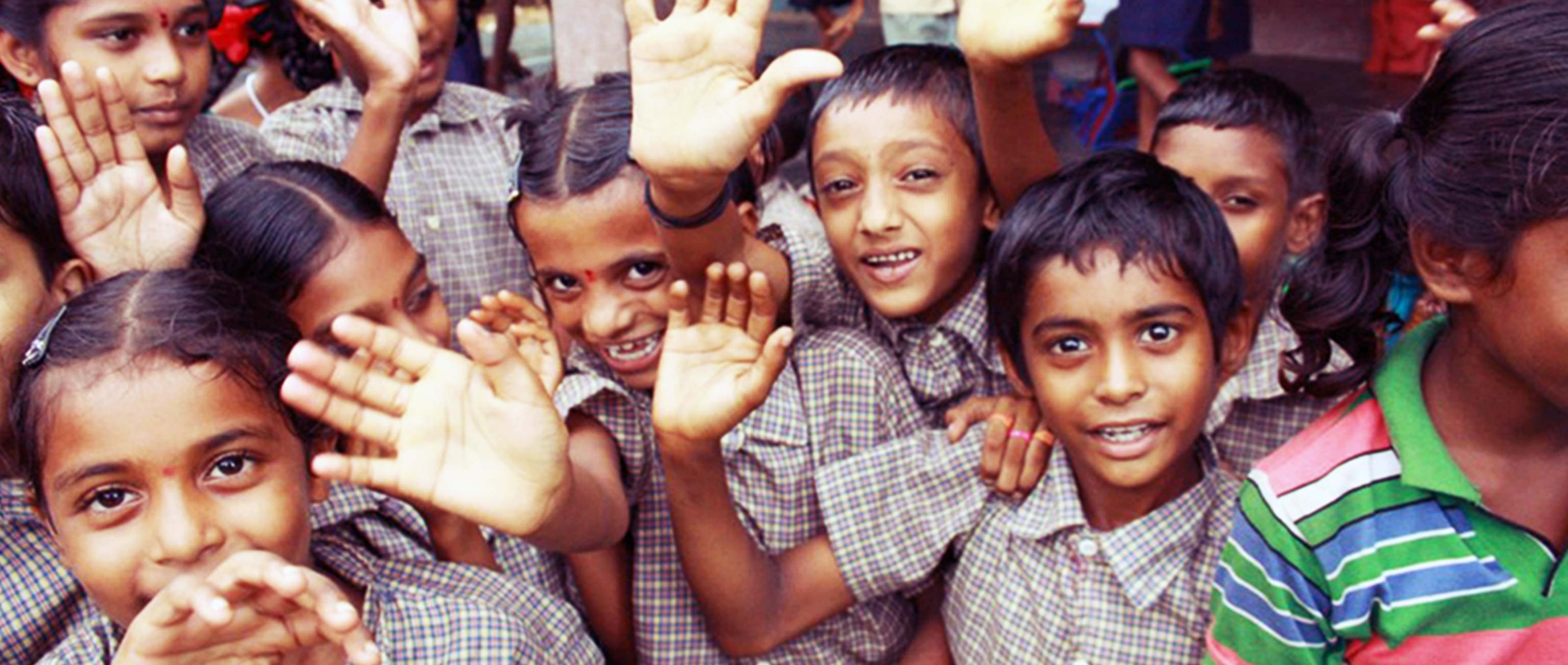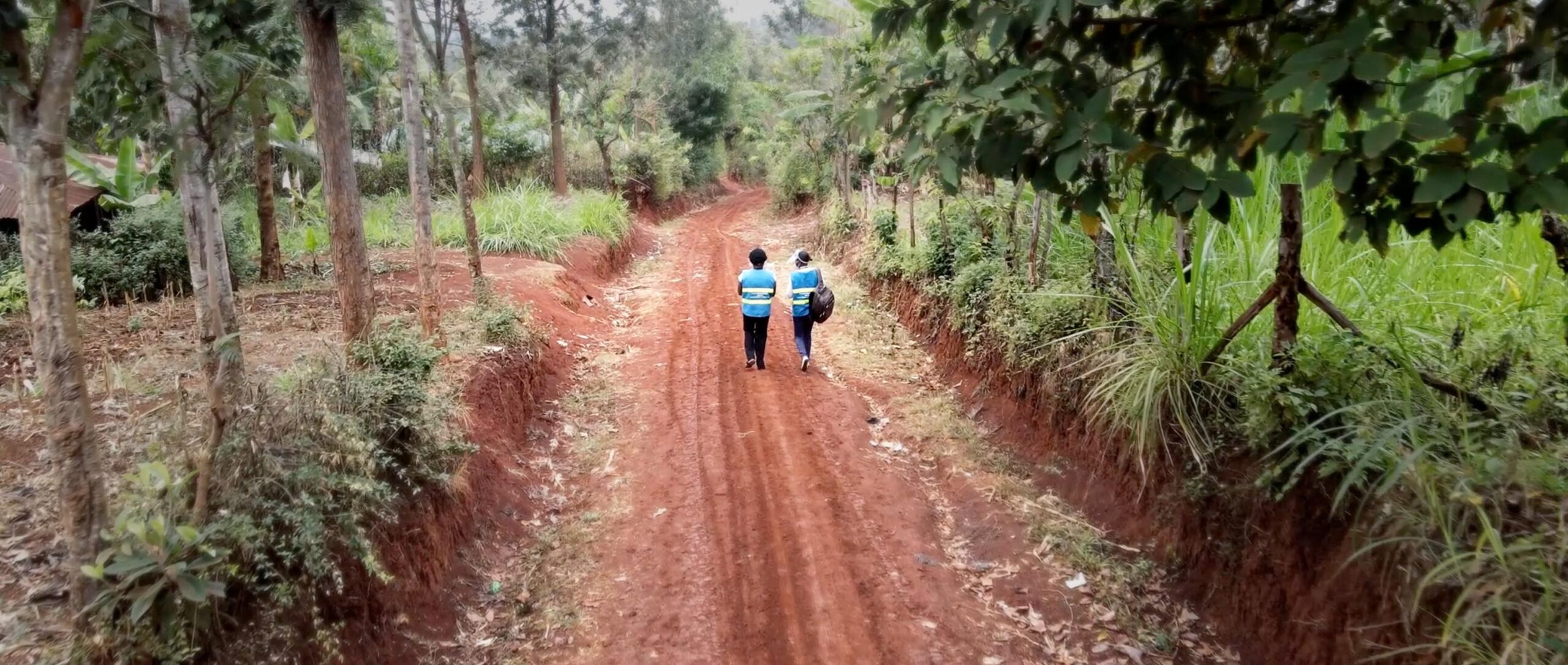Field Notes: Inside a Pratham Classroom in Karnataka
In rural India, half of village children can’t read or understand math at a level appropriate to their age and grade. This disparity in education creates ripples through society; it reinforces poverty and lack of opportunity. Pratham, a 2011 Skoll Awardee, focuses on high-quality, low-cost, replicable interventions to bridge these gaps in education and improve outcomes for Indian children. Their interventions have both shown impact and shaped policy.
Back in March, just before the Skoll World Forum, Shivani Garg Patel, a Principal here at Skoll, and Joony Moon, with the Skoll Analysis and Insight team, traveled together to Karnataka, in southwest India, to see Pratham’s work first-hand and get a sense of the equilibrium change happening there right now. They spent several days learning about Pratham’s work with government partnerships, visiting schools, meeting with teachers, and getting to know local Pratham staff. Skoll Editor Zach Slobig recently sat down with Shivani and Joony to hear more about their trip and the latest interventions that Pratham has developed.
Zach Slobig: Pratham has been in the Skoll portfolio since 2011, and the organization was founded back in 1993 by Dr. Madhav Chavan as a response to a Unicef challenge to universalize primary education in India. What prompted this trip and why was it an ideal time to check in with them?
Joony Moon: It’s now been over a year since Pratham began scale-up of their Teaching at the Right Level (TaRL) model, an approach that involves evaluating children with a simple assessment tool and then providing instruction according to learning level rather than age or grade.
Shivani Garg Patel: Skoll is supporting the TaRL scale-up efforts with grant funding, and we wanted to take the time to be with their teams on the ground during this trip. Pratham is applying the TaRL model across 84 districts in 7 states across India and estimates that it can reach 5 million children through its approach this year alone. As Joony mentioned, Pratham’s ASER assessment tool provides the foundation by which the Indian government measure students’ proficiency in math and reading. ASER has now become the national standard in India and has also been replicated in other countries.
Joony: While Pratham implements TaRL across a number of different grades, we were able to visit its work with children in grades 3-5, of whom many lack even the most basic reading and arithmetic skills. They get an initial assessment to determine their true level of learning, after which groups are formed, and teachers use level-appropriate methods and materials that students can actually comprehend and find engaging.
Shivani: In these communities, there’s limited consistency in teaching quality and you have different levels of student knowledge and proficiency. So, the groupings will start at the most basic level. For example, students will be asked, “can you recognize this letter?” Additional groups to those who recognize letters will be around those who can read words, sentences and full paragraphs. As the Pratham intervention proceeds, they see students move from group to group. They take a similar grouping approach with math.
Zach: Can you give me sense of the students’ improvement with this approach?
Joony: Rigorous data collection over the course of the 60-day supplementary learning program—developed and honed by Pratham but implemented by government teachers—allows teachers and government officials to track improvements from baseline results to midline and endline assessments. Impressively, these learning programs improve outcomes by 10-20 percent across Pratham’s government partnerships.
Shivani: In some states, learning outcomes have been as high as 40-48 percent improvements in reading and math. The classrooms we spent time with were vibrant. Students often sat in their groups while teachers mixed in large group instruction with smaller group instruction throughout the lesson period. The Pratham-created curriculum is meant to be interactive and physically active, to flip the way the children are learning. Teachers with whom we met say the curriculum keeps kids in each level engaged and energized. School attendance has even increased because the kids enjoy the activities so much.
Zach: I’ve worked in primary school classrooms and I bet seeing that increased level of engagement must be really gratifying for the teachers. I wonder though what kind of barriers there are to shaking things up in this way. I’d bet some teachers could be skeptical of a less traditional approach?
Shivani: This is where a data-driven approach is critical. At the midpoint of the intervention, they do an assessment which shows improvements. We’re talking about groups of kids leveling up in reading and basic math measurably in 30, 60 or 90 days, which is powerful. It’s seeing this data that converts teachers from skeptics into promoters—even champions—of this approach.
If you can get kids to read, then their ability to learn is arguably unlocked. The teachers with whom we met found this all very exciting and motivating. It seemed to have an energizing effect for the teachers, many of whom are taking the methodologies and devising their own interactive teaching exercises. Some of these teachers have become evangelists of the approach, sharing their progress with teachers from other schools and districts.
Joony: We also asked the chief minister of education in the state of Karnataka about program sustainability. What would happen in the case of a change in political leadership? He said the key is to fully embed the program up and down the system so that it continues to succeed regardless of a leadership transitions. Convincing people takes time though. That’s something we heard over and over.
Zach: Pratham has also begun to innovate outside of its core remedial education programs into a sort of after school program. Tell me more about that.
Shivani: The concept is around the creation of “libraries,” which aren’t physical buildings, but an after-school learning group that’s not about books at all. It’s a convening of kids, where they come together and learn from each other in a peer-to-peer format. It’s fun and physical and even theatrical. The libraries are led by volunteers who facilitate quick activities. The library session we joined was led by a local engineering college student. She told us she loves to work with the kids and that it’s a great way to release the stress of her studies.
Zach: Sounds like a more holistic approach to learning—a natural extension of the less than traditional approaches implemented in the classroom.
Joony: Right, I think they’re pushing the traditional definition of the thing called learning, and trying to get beyond what’s measured in the classrooms. How do you make kids actually want to learn? How do they end up learning about life rather than learning just from a textbook? So they’ve got this metrics and outcomes focus, but they also care deeply about the long run of learning in a more and holistic manner. The library is one aspect of that.
Zach: Can you tell me a bit about one of the kids you met at the library session?
Joony: There was this one girl who told us that before she started coming to the library she had never felt confident. She said that she would never speak up or lead things, but then the dynamics of the library really built her confidence. It made her far more comfortable in that role of leading and having a voice. Listening to her, I was surprised. You never would have thought that this strong, confident little girl had ever been anything else.



